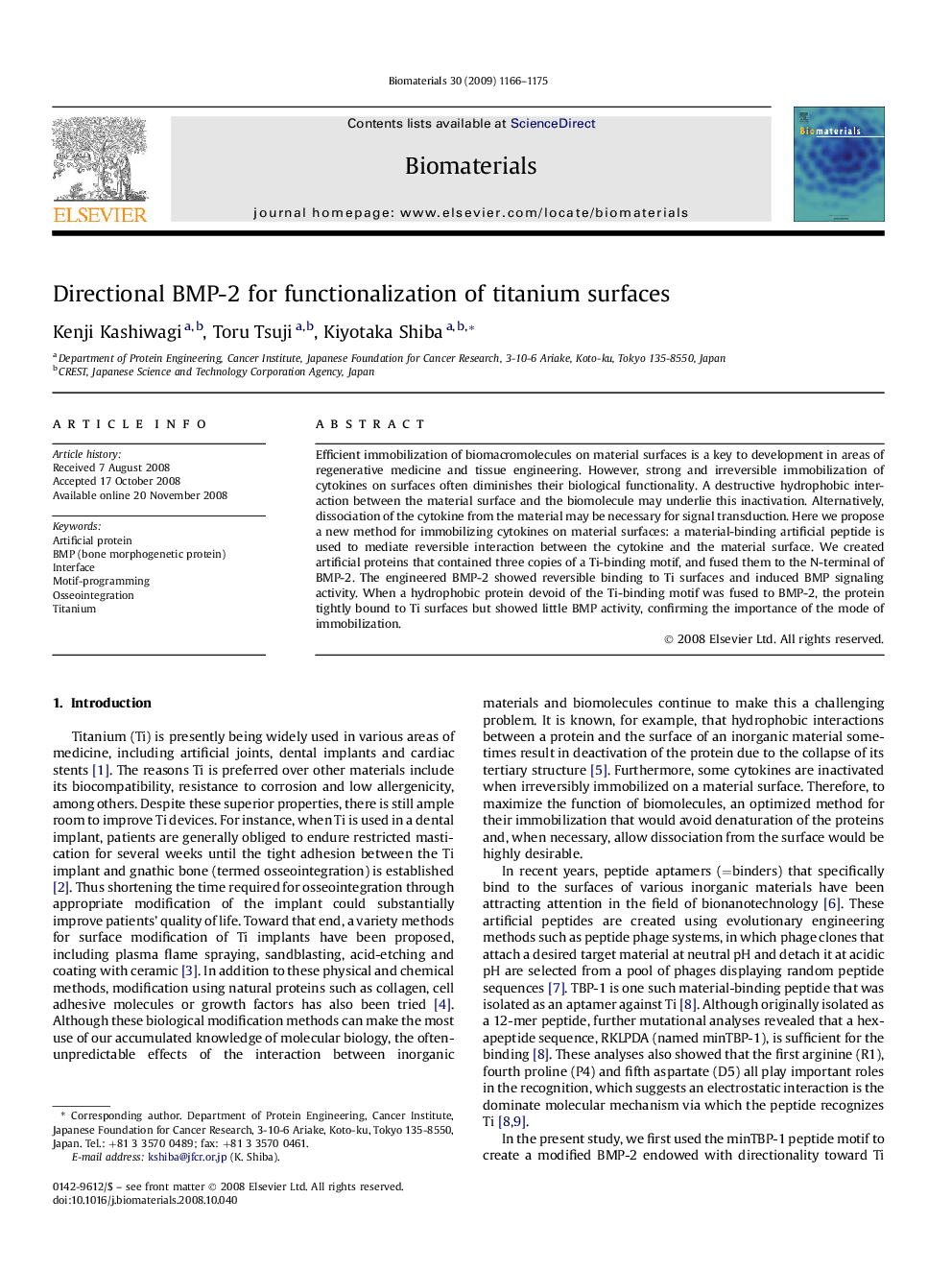| Article ID | Journal | Published Year | Pages | File Type |
|---|---|---|---|---|
| 9266 | Biomaterials | 2009 | 10 Pages |
Efficient immobilization of biomacromolecules on material surfaces is a key to development in areas of regenerative medicine and tissue engineering. However, strong and irreversible immobilization of cytokines on surfaces often diminishes their biological functionality. A destructive hydrophobic interaction between the material surface and the biomolecule may underlie this inactivation. Alternatively, dissociation of the cytokine from the material may be necessary for signal transduction. Here we propose a new method for immobilizing cytokines on material surfaces: a material-binding artificial peptide is used to mediate reversible interaction between the cytokine and the material surface. We created artificial proteins that contained three copies of a Ti-binding motif, and fused them to the N-terminal of BMP-2. The engineered BMP-2 showed reversible binding to Ti surfaces and induced BMP signaling activity. When a hydrophobic protein devoid of the Ti-binding motif was fused to BMP-2, the protein tightly bound to Ti surfaces but showed little BMP activity, confirming the importance of the mode of immobilization.
